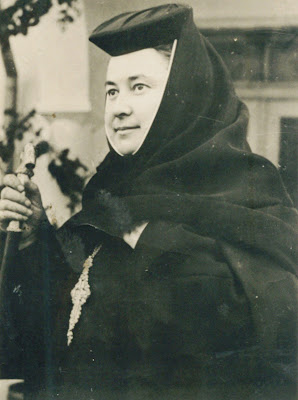 |
| Monastery Vladimiresti |
Price:Free
Hours: Open daily
The construction of the Vladimiresti Monastery began in 1938 following the visions of Sister Lica - Vasilica Barbu Gurau, who later became Mother Veronica, abbess and stavrophore of this monastery. In a cornfield that belonged to the family (mother and uncle Ionica Barbu from Tudor Vladimirescu commune), she saw a light coming down from the sky. The Savior present in that light, signifying the place with a flame that fell to the ground, told him to build a monastery of nuns dedicated to the Assumption. A wooden cross (now in the museum) was placed on the site of the first divine vision. ” The nunnery reopened in 1989, was founded by Mother Abbess Veronica until 2005 when she died, her body being buried in the churchyard. "The gate from the entrance to the domain
Vladimireşti Monastery is typical of Maramureş and was worked with great skill in 1992. From here, the road to the orchard, vineyard and pond starts. The entrance to the precinct is made on an alley guarded by lime trees, passing under the bell tower. On either side, there is the abbey and the priestly home ”, is the description sent to us by Father Rareş Bucur. Being the third nunnery after Agapia and Varatec, it has treasures of church art, more precisely over 100 centuries-old icons and 8 massive silver cups. The chalices were hidden in the large church of the monastery during the communist persecution. The Museum of the Vladimir Monastery has 106 old icons from the 18th-19th centuries. Here are kept the wooden cross or "corn cross" with which the place of the Holy Altar was marked, at the appearance of the divine sign (vision). Also here, there is an icon with the Mother of God, left to the abbess Veronica who is the founder of the monastery by her mother, on her deathbed. And in the abbey of the monastery are preserved, in place of honor, eight cups of massive silver out of the 12 found in front of the holy proscomidia, in the big church. The chalices were hidden by an unknown person, at the abusive closure of the monastery, in the '50s, during the communist persecution. That's how they were saved from extinction. Also here, there are other icons and valuable church objects.
After the fall of communism, the place was reopened after 1989. To the south of the big church is the tomb of Archimandrite Father Visarion Nicolau, the founder of the chapel, and to the north is the tomb of the abbess Veronica, passed to the eternal on September 15, 2005. Vladimiresti Monastery has workshops church painting, sculpture (frames and church furniture), framing icons, tailoring, embroidery, knitwear, artificial flowers and carpets. The household of the monastic settlement has 80 hectares of arable land - the dowry of the nuns - vineyards, orchards, birds and poultry, its own bakery, a hospital, and even a small acacia forest. Formed by a council of over 100 monarchs, the Monastery is a place of pilgrimage.
More pictures:
 |
| The Monastery Gate |
 |
| The tomb of saint Veronica |
 |
| Monastery Vladimiresti |
 |
| Holy Icon |
 |
| Saint Veronica |
Comments
Post a Comment